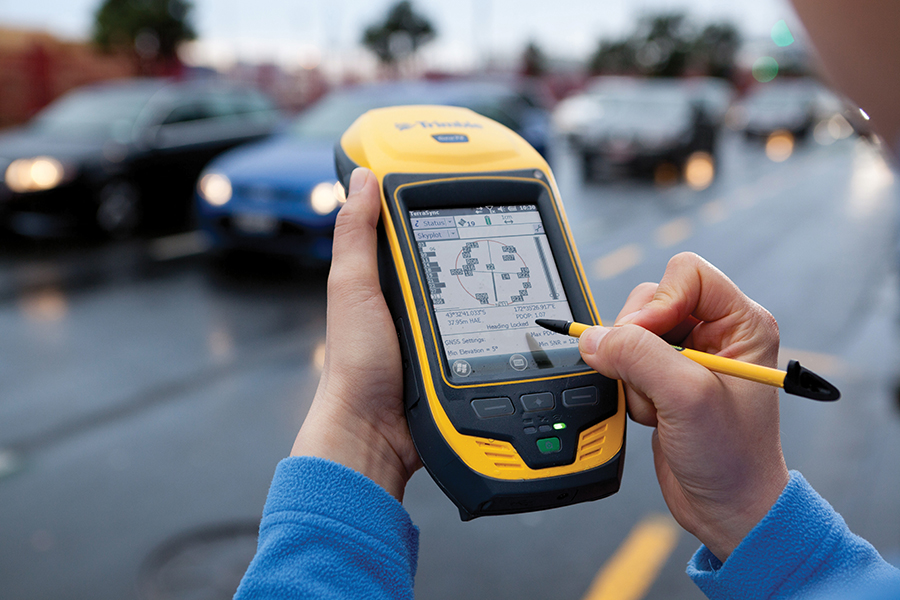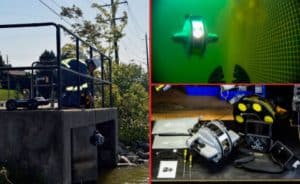Should I Post Process My GPS Field Data?
The answer to this question may seem obvious. We all want to get the best data possible when using a GPS or GNSS receiver, right? So how can we accomplish that?
Many of us are happy with real time corrections. But, what if real time corrections are not available? In North America, most of us can take advantage of WAAS (Wide Area Augmentation System) or SBAS (Satellite-Based Augmentation System). The four WAAS satellites are over the equator in a geostationary orbit. This means they are in a fixed point in space. The key to successful use of this correction signal is whether or not the GPS antenna has a clear view to the south. If not, then you must collect uncorrected data and then apply corrections back in the office.
But should you apply corrections to your field data in all cases? The answer may be “no.”
Through experimentation and years of experience, we have discovered, with the help of our conscientious customers, that when using a SiRF-based GPS receiver, it is not always in the best interest of data quality, to post process (apply corrections to) field collected data.
The SiRF Company is located in San Jose, CA. They arguably make the most sensitive GPS chipset in the entire world. But, in the GPS industry, sensitivity is often equated with error. The SiRF receiver has the ability to pick up GPS signals not only coming directly from the satellites, but from everywhere. This means that signals bouncing off trees, rock outcroppings, lakes, roads or any object in the vicinity could be acceptable to the receiver.
In order to obtain high-quality measurements from satellites, which in turn, equate to signal integrity, a field user does not want their GPS unit to pick up signals other than those coming directly from the satellites. Received signals that have bounced off other objects have the effect of producing an error in position. So, when working in a High Multipath Environment, the SiRF-base receiver is especially subject to this type of error.
Multipath is an apt term. It describes a condition where the signal from the satellite takes more than one path to the GPS antenna; the direct path and the bounced or reflected path. Since the receiver is able to determine your location on the ground based on a calculated distance between the GPS antenna and each satellite in view, collecting a myriad of “bounced” signals will have a detrimental effect on your position. The error in position can be dramatic.
The next logical step to improve the accuracy of your positions would be to apply corrections using a differential correction software program. However, here is what we discovered:
When using a SiRF-based receiver in an open environment where there are very few obstructions higher than the GPS antenna, applying corrections to the field data by post processing will improve the accuracy over the uncorrected data collected in the field.
But, when using that same receiver in a High Multipath Environment, applying corrections to the field data will often magnify the errors. This happens because differential correction software programs like Pathfinder Office, Trimble Positions Desktop and GPS Analyst make certain assumptions as to what type of data is contained in the file. SiRF-base receivers have no filtering algorithms built into the design of the hardware or firmware, so it’s not uncommon to actually add error to the field data when applying corrections.
The following Trimble GPS units use a SiRF-base chipset:
- Juno 3B
- Nomad 900G
- Yuma
The Juno 5B and the Yuma2 use a u-blox brand receiver. The same result after post processing has occurred with this receiver type as well.
More sophisticated GPS and GNSS receivers produce much better results for several reasons. Features in these unit include:
- Better Antenna Design – an antenna that has a built-in ground plane to prevent the collection of signals bouncing off the ground or that emanate below the elevation mask set in the data collection software. An antenna that has a more precise phase center to focus the reception of satellite signals in a smaller area.
- Better Receiver Design – receivers that collect more of the data being broadcast by the satellites that assist in modeling out errors in the ionosphere.
- Everest Technology – this is a built-in multipath filter. The filter senses when a solitary signal bounce has occurred so the signal is rejected. Everest Technology is capable of filtering out 80-85% of Multipath that would normally be collected without that filter.
- Better Electronic Shielding – many receivers have GPS, Bluetooth, Wi-Fi, cameras, cellular modems and color screens, all which emanate frequencies that could interfere with each other, diminishing the ability of the unit to perform. Higher accuracy receivers do a much better job of keeping these signal separate, insuring top performance and minimizing frequency crosstalk.
These types of receivers are superior in performance and always take full advantage of post processing by producing excellent results. These receivers are:
- Geo7X
- Geo6000
- Geo5T
- Geo 2008-3000
- ProXRT
When we get a request from a customer wanting to use GPS on a project, there are some very important questions we ask:
- Does your project have an accuracy requirement?
- What kind of environment will you be working in? Wet or dry? Open or obstructed?
- Do you need to know where you are while in the field, or will you accept post processed solutions?
- And of course,…..what is your budget?
Our job is to consult with you thoroughly so we can recommend the solution that will work. Not everyone needs the most accurate system on the market. We also don’t want to recommend a system that will disappoint you.
If you have any questions, please don’t hesitate to contact us. We want to be a trusted, integral member of your team and only benefit if we can provide you with a solution.







